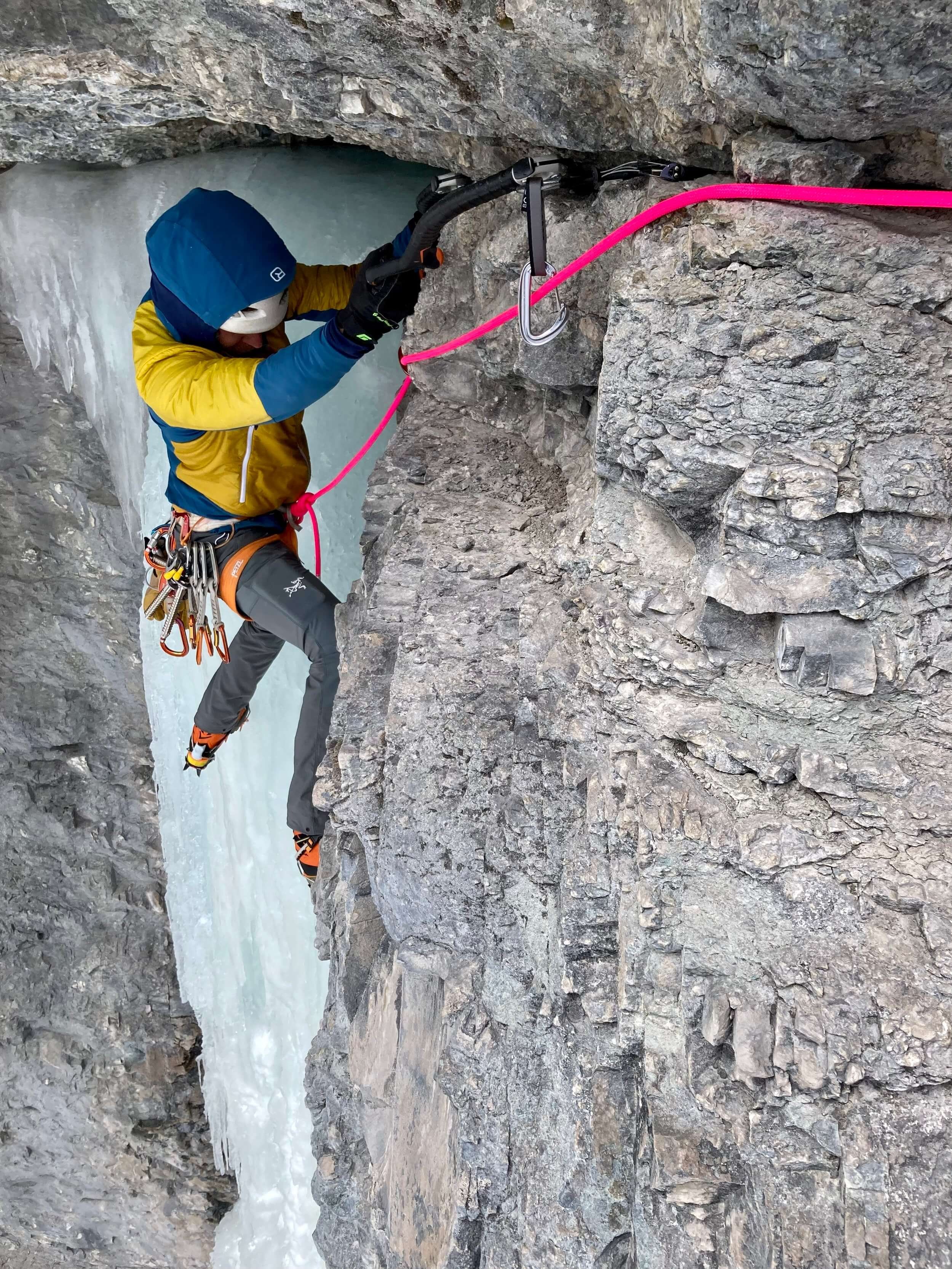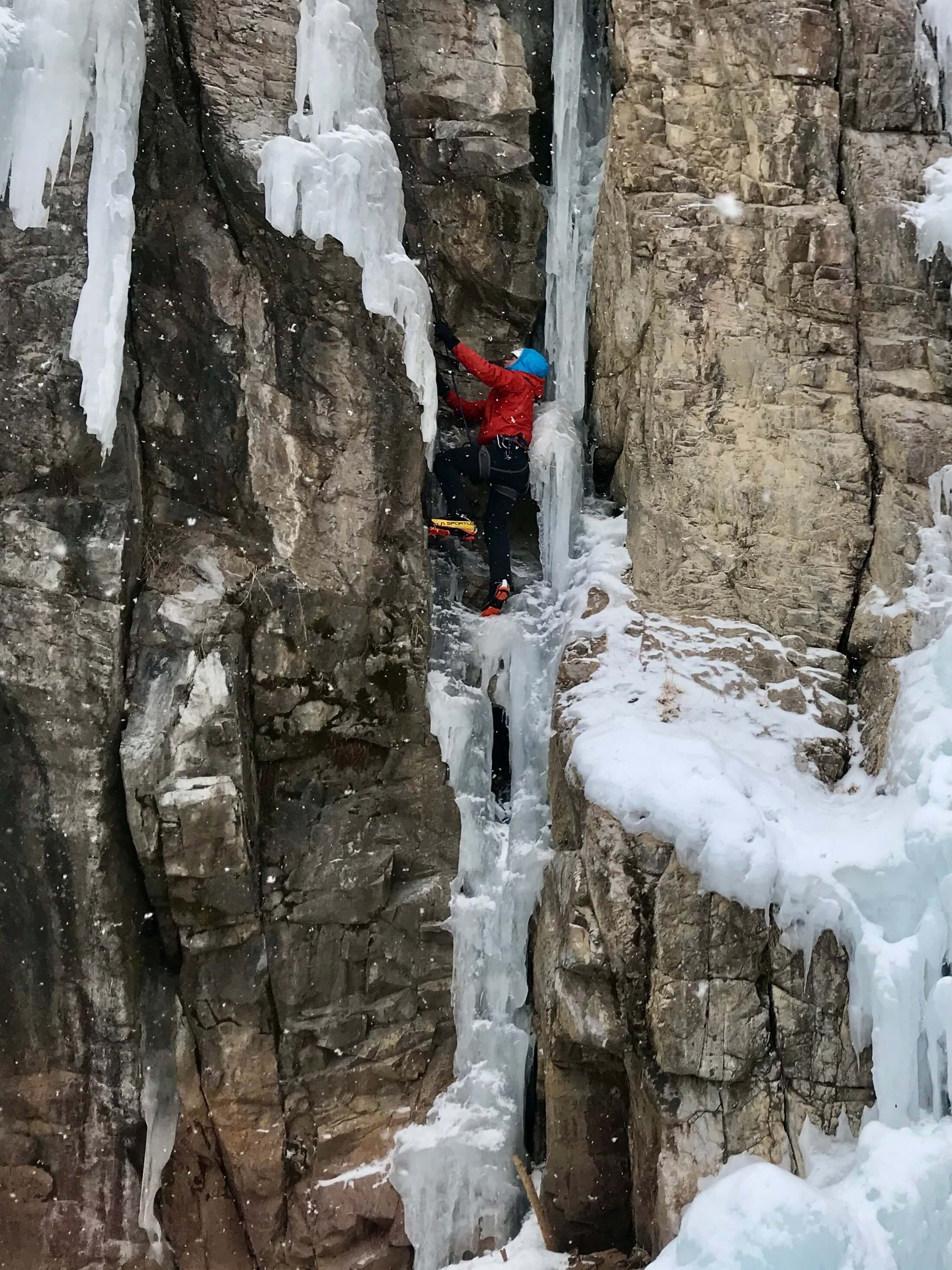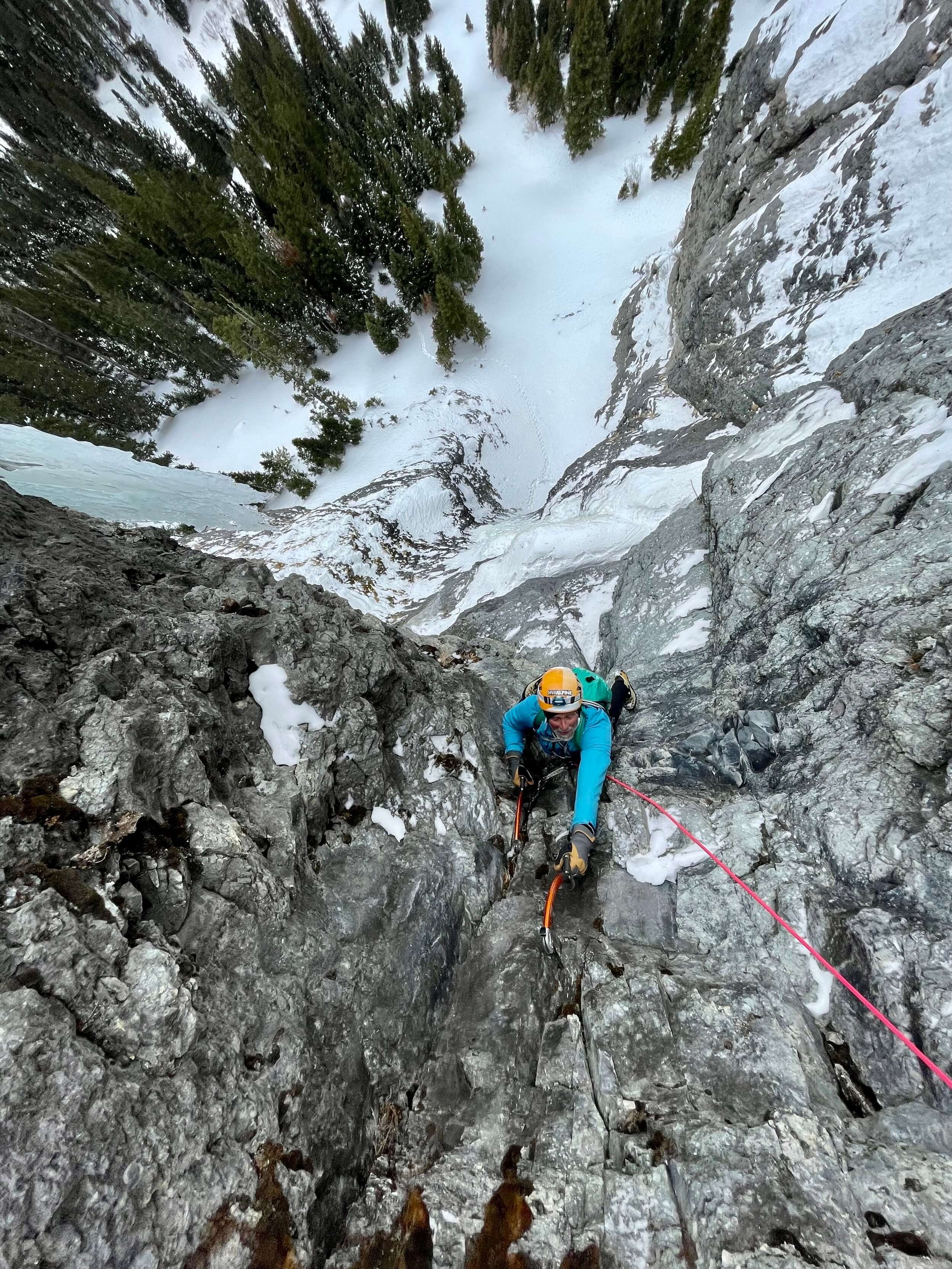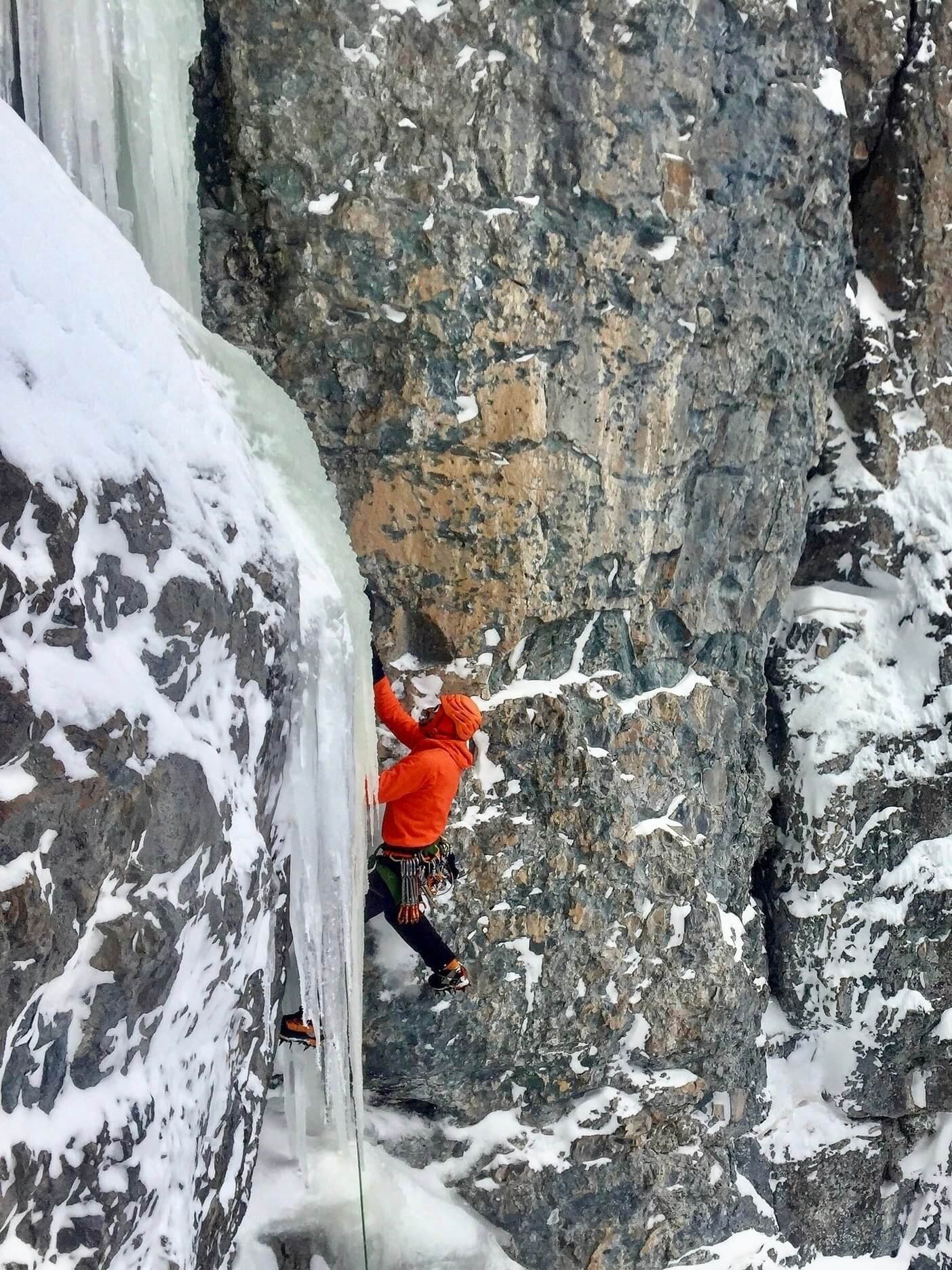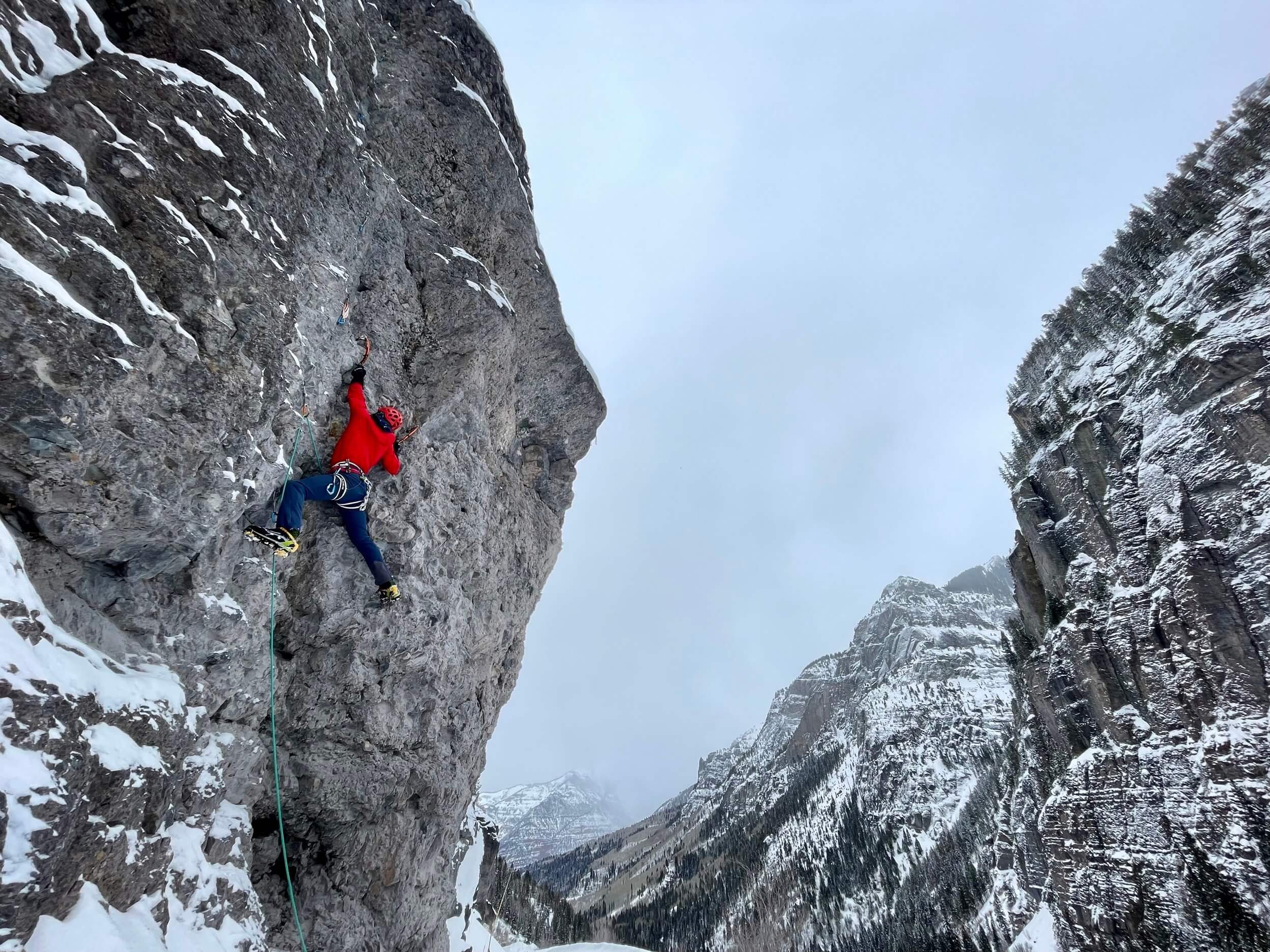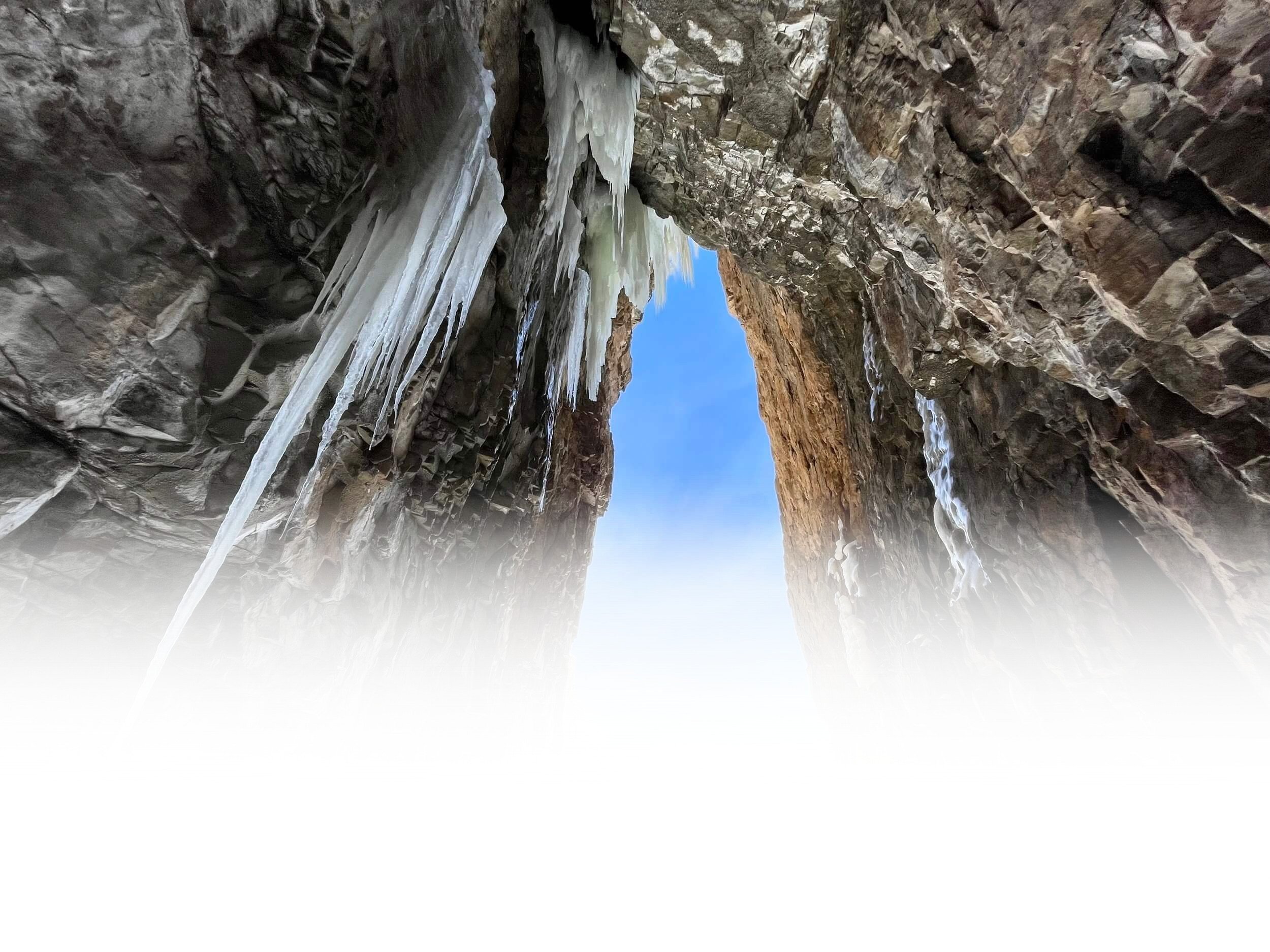
The Art Of Mixed Climbing Clinic
The 2-day Mixed Climbing clinic is focused on developing the building blocks necessary for efficient and fluid mixed climbing, from drytooling on bare rock with ice tools and crampons to delicate and thin ice climbing. Throughout this 2-day mixed climbing clinic, based in the Ouray Ice Park and Skylight backcountry ice climbing area you will learn:
Review of foundational ice climbing techniques and improve efficiency
Body positioning for quiet movement
How to identify and utilize holds on rock and thin ice
Reduce the pump factor (fatigue)
Test and improve your stability and climbing ability on a variety of routes
Ice and mixed climbing course
Previous toprope ice climbing experience required, climbers should be comfortable on WI4-
2 full days (8 hours each). See open enrollment dates below or choose custom dates
Learn Efficient Mixed Climbing Techniques
-
Your guide will discuss course logistics, your goals, learning outcomes and conditions updates in the days prior to the course. Our itineraries are flexible based on current conditions and individual goals, below is an example itinerary of what you may expect:
07:00 Meet your guide and fellow course participants at a local bakery in Ouray for a meet and greet with a quick breakfast and coffee before heading out for the mixed climbing course.
07:30 We will drive up Camp Bird Road to the winter gate closure, situated 1000 ft above Ouray.
07:45 A 15 minute walk up the snowy road to the Skylight area, where we have access to several moderate mixed and drytooling routes as well as a several great pure ice routes.
08:00 We’ll start the day with an introduction to how to read the route and fundamental mixed climbing techniques. This includes body positioning to stay in-balance and delicate climbing on thin ice. After setting up a couple routes, we’ll spend the day toprope climbing and honing mixed climbing techniques.
15:30 Wrap up the climbing and hike back to the cars.
16:00 Drive back to Ouray and finish the course for the day. We highly recommend relaxing with an après-climb soak in the town’s hot springs. -
07:30 Meet your guide at the Ouray Ice Park parking lot and gear up for day.
08:00 Take advantage of easily accessible mixed climbing and drytooling routes at the Ouray Ice Park. Many of the routes here are steeper and have more opportunities for combining substantial sections of both ice and rock for a true mixed climbing experience. After setting up anchors and reviewing skills from the previous day, we’ll focus on efficient mixed climbing and improving techniques with customized coaching from your guide.
15:30 We’ll wrap up the climbing and walk back to the cars.
16:00 Course is finished, summary of skills and next steps.


